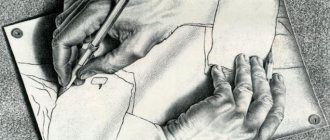History of discovery and study
People who contributed to the discovery and development of transactional analysis:
- Eric Bern. Transactive psychology appeared thanks to this scientist.
- Robert Goulding. He was called an unusual, unique, brilliant psychotherapist. He was able to combine Gestalt therapy with transactional analysis.
- Mary Goulding. He is the creator of a special approach in psychology called “decision change therapy.” It combines Gestalt therapy and transactional analysis.
- Fanita English. He is the founder of the Western Institute of Transactional Analysis and Gelstalt, which is located in Philadelphia.
- Tybee Kaler. A famous psychologist who published 4 books and wrote more than 100 scientific articles that have earned respect among other researchers. He developed a method for effectively selecting astronauts. The scientist made a great contribution to the development of transactional analysis.
- Claude Steiner. He was a master of practical psychology. He studied the theory of transactional analysis and became a prominent follower of the teachings of Eric Berne. After his death he headed the school of this direction.
- Julie Hay. A student, an ardent follower of the teachings of Eric Berne. She created several important theories for transactional analysis.
The concept of transaction analysis
Definition 1
Transactional analysis is a psychological model that describes human behavior both individually and as part of a group. This model includes not only a psychological and conflictological approach, but also a philosophical one.
Transactional analysis is based on psychoanalysis and represents a special model, presented in simple and accessible language. It is based on the position that the same person, being in a certain situation, can function differently, based on being in a certain ego state. Each person can think independently, learn, make decisions, openly express their feelings, not only at home, but also at work, at school, when communicating with peers or neighbors, because in any place where people exist.
The foundations of this theory were developed and described by Eric Berne, as well as a number of other psychotherapists. Scholars in a variety of fields have also studied transaction analysis. The first studies in this area were published back in the 1960s, but the peak of public interest in the problem under consideration occurred in the early 1970s.
Finished works on a similar topic
- Coursework Theory of transactional analysis by E. Berne, basic ego states and types of transactions 440 rub.
- Abstract The theory of transactional analysis by E. Berne, the main ego states and types of transactions 250 rub.
- Test work Theory of transactional analysis by E. Berne, basic ego states and types of transactions 190 rub.
Receive completed work or specialist advice on your educational project Find out the cost
Theories
The main cornerstone of transactional analysis is script theory. Its creator is Eric Berne. Over time it was improved by Claude Steiner. Elements of the theory:
- A counter-script is a set of actions performed in a certain sequence. Allows you to move away from the original scenario. It begins to take root in a third-party ego state. If, according to the standard scenario, a person must suffer, then according to the counter-scenario he becomes happy.
- A script is a life plan that has been drawn up since childhood. It is chosen by children depending on the foundations that those around them, their parents, lay in it. The choice of scenario depends on the will of the child and the influence of external factors.
- Anti-script - formed when a person cannot live according to the script drawn up in childhood. At the same time, the subject cannot forget about the main scenario. So he continues to act according to it.
A scenario refers to the fate of an individual, and an anti-scenario refers to a lifestyle.
What is it and what is it used for?
Transactional analysis (TA) is a direction in psychology, the founder of which is the American psychologist Eric Lennard Berne.
The concept of TA is based on the division of personality into social roles.
In this case, we can distinguish three basic positions (Adult, Parent, Child), which form the basis of social interaction, determining the nature of communication between people.
Transactional analysis was founded in 1955 and is still used in therapy in its original version, without any major changes or additions. Only certain parts of the theory were finalized by Claude Steiner (a colleague and like-minded person of E. Bern).
The task of TA is primarily to provide psychological assistance to those people who suffer from communication problems.
During the therapeutic process, personality reconstruction occurs. A person breaks down old, unviable and unproductive attitudes, replacing them with new ones.
A new system of values and decisions, focused on success, is being formed.
Eric Berne, working on the theory of TA, took as a basis the method of psychoanalysis, . But at the same time, the famous psychologist tried to simplify the theory as much as possible, presenting it in simple and understandable, and sometimes even primitive language.
He also developed a version of the theory of transactional analysis for preschoolers.
Eric Berne did all this so that people could independently study and apply TA, analyzing and changing their behavior based on the knowledge gained.
Types of ego states
Throughout life, every person is in one of three ego states - adult, parent, child.
Parent
To understand what it is to be in the ego-parent state, you need to know how a child absorbs knowledge and experience from adults. The first 3 years of child development depends on the actions of the parents. Adults bear the greatest responsibility. They must teach the child to express emotions, feelings, and teach safety.
When a baby watches adults, their images are stored in his memory. Psychologists call this technique introject. Adults may have many introjects in their minds, which resemble the image of parents, brothers, sisters, and other relatives.
Internal images of adults in the ego state of the parent are divided into 2 types:
- Caring. The images are characterized by kindness, care, love. When a person enters this state, he calms down and relaxes. He will help another person if he is feeling bad. A caring parent is more diplomatic. He tries to resolve controversial and conflict situations peacefully, making compromises.
- Controlling. A characteristic feature of such an inner self is constant criticism. Such images constantly criticize any actions, contradict undertakings, and prevent normal development and solution of assigned tasks. An individual with a predominant sense of a controlling parent quickly finds faults in other people and shows anger towards others.
The ego state of the parent helps to establish contact with others and communicate successfully with them. Sometimes internal images begin to dominate. They suppress the will and internal conflict occurs. The person himself begins to live as the remembered images from childhood indicate to him.
Child
The child's ego state represents an emotional experience. When the baby is in the womb, he already begins to receive it. After birth, experience comes from parents. Children do not know how to think rationally. Children under three years old feel changes in the emotional state of their parents, but cannot accumulate knowledge in large quantities.
If the parental ego state is characterized by prohibitions and control, then the child’s state is characterized by feelings and emotions. These include desires, needs, dreams, phobias.
This type of ego state is divided into 3 subtypes:
- Rebellious. Such people are characterized by fatigue from everything. One striking example is a teenager who joined an informal subculture. More often, such children remain approximately until the age of 14. Then they change dramatically, trying to try everything that was previously forbidden to them.
- Adaptive. In this state, a person more often experiences fear, depression, agrees with the opinions of others, forgetting about his own principles. Most of all, such individuals are afraid of being rejected.
- Free. A similar condition occurs in people who were allowed everything in childhood. Such individuals were brought up in families with average or high social status. Usually these are creative, cheerful individuals with developed creative thinking. They have changing interests. With sudden changes in mood, they can abandon their affairs and go nowhere. He often generates new ideas.
The advantage of such a state is freedom and emotionality. The main disadvantage is that the child’s condition is far from reality when compared with the parent.
Adult
This ego state is called intermediate between parent and child. Such people ignore requirements and prohibitions. They adequately perceive the world around them, control their behavior, and weigh all risks when making decisions.
Forms of communication
E. Burn considers the following forms of communication: play, entertainment, activity, ritual, intimacy, withdrawal. The game is a set of hidden transactions leading to conflict. With this form of communication, one of the subjects always loses, since there is no equality of interests or complementarity.
Game groups
- Games of life (“Victim”, “Alcoholic”, “Debtor”, etc.)
- Family games (“Scandal”, “Harried Housewife”, etc.)
- Games in, “Disadvantage”, etc.)
- Sexual games (“Get off, you fool”, “Stocking”, etc.)
- Doctor's office games ("Peasant Woman", "I'm Just Trying to Help You", etc.)
- Constructive games (“Flatterer”, “Home Sage”, etc.)
Despite the fact that gaming can cause psychosis and neuroses, this form of communication has its advantages. If you “play” in doses or at the initial stages of communication, then in this way you can get closer to a person (techniques for such rapprochement are described by former FBI agent Jack Schafer in his book “Turning on Charm Using the Secret Services Method”), get emotional release, or simply kill time.
Entertainment
This is a form of communication whose purpose is to occupy free time. For example, conversations during lunch breaks in the office. In order to avoid conflict in this form of communication, it is necessary to maintain a common line on the chosen topic. If girlfriends discuss the shortcomings of their husbands and attach cliches to them from the category “all men walk to the left,” then they will negatively accept the opposite position of one of the interlocutors.
Activity (Procedure)
This is a form of communication in which communication is built on the basis of the Adult-Adult model. For example, work process or study. As a rule, people who constantly communicate with each other use activity as a way to escape conflict. For example, if a conflict is brewing in a family relationship, then the partners throw themselves into work; in such cases, weekend neurosis is possible.
Ritual
A form of communication associated with the attitudes of society and general moral and value concepts of the social environment in which a person finds himself. The ritual represents the Parent-Parent model. Such communication does not lead to the creation of conflict. Rituals are divided into formal and informal. Transactional analysis helps not to take to heart the actions and words performed during the ritual, since these are a kind of evidence of the past.
Proximity
E. Burn characterized intimacy as “a sincere non-game relationship between people with a free mutual exchange of thoughts and feelings, excluding profit.” Eric Byrne believed that this particular form of communication helps maintain health and avoid conflicts.
Withdrawal
Immersion of a person in his inner world. This model of communication is typical for people who have received some kind of emotional trauma in the process of communicating with other people, and is expressed in the form of internal dialogue. Withdrawal into oneself has the function of calming and cleansing of unnecessary emotions. However, if withdrawal into oneself drags on for a long time, it can develop into obsessive-compulsive psychosis.
The purpose of transactional analysis is to determine the ego state of the subject of communication who sends the message and the subject who reacts to this message. That is, analyzing the game a person is in and finding ways to get out of this game. E. Burn believed that a person begins to learn games in childhood and the surest way to protect a child from neurotic problems in adulthood is proper upbringing.
Self-diagnosis methods
To independently determine your ego state, you need to monitor your own behavior, actions, manner of communication, thoughts. Each style is characterized by certain prevailing features:
- For the "adult". In any business, you want to get personal benefit. Before an individual begins to solve any problem, he looks for all possible options for achieving the goal in order to spend a minimum of effort and finances.
- For the “parent” Such an individual controls others, reminds them of debts, and points out shortcomings. They often frown, shake their heads, and cross their arms over their chest.
“Children” are characterized by selfish phrases, for example, “I don’t care about this,” “This makes me very angry,” or “I want.” They do not know how to hide emotions; they immediately splash them out. They don't know how to lie, they often tell the truth. Subject to sudden mood swings.
Ways to interact with people
To communicate with people, you can use different methods of transactional psychology - transactions, stroking, games according to E. Berne. Each of these methods of interaction has certain characteristics.
Transactions
Transactions are the process of interaction between two ego states of different people. Consists of a reaction, a stimulus. Allows you to establish communication with a person who has a different or similar ego state.
Stroking
Allows you to improve the relationship between “parent” and “child”. There are three types of stroking:
- Physical. The most popular of them are pats on the shoulder and handshakes.
- Non-verbal. These include winks, facial expressions, and gestures.
- Verbal. This is praise, compliments.
It is important to understand that stroking can have both negative and positive messages.
Games according to E. Bern
Berne's theory of psychology highlights certain games within the framework of psychoanalysis. They represent an unconscious behavioral pattern that consists of several parts - rewards, retribution, blows, responses, traps, weakness. When exposed to a person in a certain way, various feelings are provoked. The closer the end of the game, the stronger the manifestation of feelings and emotions.
Eric Berne identified 6 types of psychological games, which are classified depending on:
- From zones - phallic anal, oral.
- From clinical types - obsessive, hysterical, depressive, paranoid.
- From the objects used - games that involve body parts, money or words.
- Depending on the number of players - 2 or more.
- From psychodynamics - introjection, projection, counterphobia.
- Depending on instinctive attraction - sadistic, fetishistic, masochistic.
Psychological games should be:
- Intense. Players are divided into separate groups depending on their character.
- Fascinating, tenacious. To get people to complete tasks with enthusiasm, it is important to capture their attention.
- Flexible. Character traits must be taken into account and different materials must be used.
Psychological games, when performed correctly, following all the rules and with an experienced leader, have a positive impact on a person’s life.
Transactional analysis by Eric Berne
Eric Lennard Berne (real name: Leonard Bernstein) is an American psychologist and psychiatrist. He is best known as the developer of transaction analysis and scenario analysis. Biographical sketch
Eric Berne (Leonard Burns(sh)tein) was born in a poor Jewish part of Montreal (Canada), in a family of immigrants from Russia. His father, Dr. David Hillel Bernstein, was a keen practicing physician and often took his son with him when visiting his patients. Oliver James (1977) believes that the "Child" in Bern was traumatized by the death of his father, who, of course, had a strong influence on his son, whose goal was always to cure his patients. This influence is reflected in the Latin dedication on the first page of Berne's book Transactional Analysis in Psychotherapy, which translates as: "In memory of my father David, M.D., Master of Surgery and Physician to the Poor" ( Berne, 1961). Bern's mother, writer Sarah Gordon, was a professional writer and editor. After the death of her husband, she supported her children, Eric and his sister, by engaging in literary activities, and, apparently, she also influenced her son to write about the treatment of Bern's patients.
Byrne studied English, psychology and pre-medicine at McGill University in Montreal. In 1931 he received a Bachelor of Arts degree. In 1935, Bern received his Doctor of Medicine and Master of Surgery degrees from the same university. Byrne then went to the United States, where he became an American citizen. After an internship at Inglewood Hospital in New Jersey, he became a psychiatric resident assigned to the clinic at Yale University School of Medicine. Reacting to the widespread anti-Semitic sentiment at the time, Bernstein changed his last name to Bern and began practicing as a private psychiatrist in Norfolk, Connecticut. Around this time, Byrne entered into the first of his three marriages (all of which ended in divorce). Berne then became a clinical assistant at Mount Zion Hospital in New York and in 1941 began a special course at the New York Psychoanalytic Institute, where he received personal analysis from Paul Federn, a former colleague of Freud.
In 1943, Byrne joined the Army Medical Corps as a psychiatrist and it was during the war that he began working with groups. After his discharge in 1946, Berne moved to Carmel, California, and completed work on The Mind in Action. This book was later revised and published under the title A Layman's Guide to Psychiatry and Psychoanalysis. Byrne also resumed his studies at the San Francisco Psychoanalytic Institute and completed a training course in psychoanalysis under the direction of Erik Erikson. In 1950, he accepted a position at San Francisco's Mount Zion Hospital and began practicing privately again. In the last years of his life, Byrne worked in both San Francisco and Carmel, located 125 miles from San Francisco.
Since his time as a psychiatrist in the armed forces, Berne had a research interest in intuition and developed the concept of the ego image. The ego image is the therapist's intuitive idea of a person, which in some way describes his "I". Ego images are largely based on observing and listening to patients talk about themselves. In the period from 1954 to 1958, Bern developed such areas of transactional analysis as the diagnosis of ego states (structural analysis); analysis of individual transactions; analysis of series of transactions with both hidden and overt content, otherwise known as game analysis; Scenario analysis (script analysis) is an analysis of the patient’s life, with which you can extrapolate and predict his future. Berne's first transactional analysis group formed in September 1954. Berne developed his ideas by holding regular seminars in Carmel and then, from 1958, the Social Psychiatric Seminars in San Francisco, later called the Eric Berne Seminars.
Berne drifted further away from orthodox psychoanalysis, and in 1956 his application for membership in the San Francisco Psychoanalytic Institute was rejected for the third time. Regarding this incident, Berne notes: “...After fifteen years, the psychoanalytic movement and the author officially parted ways (remaining on good terms) ...” (Berne, 1961, p. 13). When, a few years later, Berne was offered membership in the Psychoanalytic Institute, he gratefully declined. Berne became increasingly convinced that the consultant should be more active than allowed in orthodox psychoanalysis and should practice transactionally rather than at the head of a couch in a psychiatrist's office. In November 1957, at the Western Regional Conference of the American Association of Group Psychotherapy in Los Angeles, Berne gave a scientific report, “Transactions Analysis: a New and Effective Method of Group Therapy,” which was published in 1958. Over the next three years, he enriched his experience by working on the islands of the South Pacific, where he went to study local socialization and mental illnesses common in various island cultures. By 1961, Berne had visited psychiatric hospitals in approximately 30 different countries in Europe, Asia, Africa and the Atlantic and Pacific Islands. The purpose of these visits was to confirm the assumptions made in different racial and cultural settings. Berne's most systematic book, Transactional Analysis in Psychotherapy, was published in 1961.
In 1963, The Structure and Dynamics of Organizations and Groups was published, which discussed how transactional analysis could be applied to working with groups. In 1964, Berne presented his ideas regarding the analysis of psychological games in the book Games People Play, which was privately published in 1961. The principles of transactional analysis are outlined by Berne in his 1966 book Principles of Group Treatment, and ideas regarding script analysis are presented in What You Say After You Say "Hello"?" (“What Do You Say After You Say Hello?”), published after Berne’s death in 1972. Byrne also wrote books: "The Happy Valley" - for children, and "Sex in Human Loving" - addressed to both laymen and professionals. In 1962, the journal Transactionai Analysis Bulletin began publication, of which Berne served as editor for several years. In 1964, the International Transactional Analysis Association (ITAA) was formed. The tasks of the ITAA were to train specialists in the field of transactional analysis and their accreditation. Now the functions of the ITAA are performed by the European Transactional Analysis Association.
During the 1960s, Byrne not only wrote books and practiced as a private consultant, but also held several positions simultaneously. Byrne was a psychiatry consultant to the US Army Surgeon General; an attending psychiatrist at the Veterans Administration Mental Hygiene Clinic; Lecturer in group therapy at the Langley-Porter Neuropsychiatric Clinic and at the Stanford Psychiatric Clinic; Associate Psychiatrist at Mount Zion Hospital, San Francisco. In early 1970, Byrne and his third wife divorced. Bern died of a heart attack on July 15 of that year. The work begun by Byrne was continued by many of his former colleagues who attended seminars in San Francisco. Among them was Claude Steiner, who improved script analysis (script analysis).
Transactional analysis
Transactional analysis was founded by Eric Berne in 1955 (USA). Transactional analysis is based on the philosophical assumption that each person will be “okay” when he takes control of his life and is responsible for it. A transaction is an action (action) aimed at another person. This is a unit of communication. E. Bern's concept was created in response to the need to provide psychological assistance to people with communication problems.
E. Berne identifies the following three components of a person’s personality, which determine the nature of communication between people: parental, adult, child.
Parental (Parent - P), which is divided into a caring parental state of the Self, a critical parental state of the Self. The parental Self, consisting of rules of behavior, norms, allows the individual to successfully navigate standard situations, “launches” useful, proven stereotypes of behavior, freeing consciousness from overload with simple, mundane tasks. In addition, the Parental Self ensures with a high probability of success behavior in situations of lack of time for reflection, analysis, and alternate consideration of the possibilities of behavior.
The adult (Adult - B) state of the Self perceives and processes the logical component of information, makes decisions primarily thoughtfully and without emotions, checking their reality. The Adult Self, unlike the Parental Self, promotes adaptation not in standard, unambiguous situations, but in unique ones that require reflection, giving freedom of choice and, at the same time, the need to understand the consequences and responsible decision-making.
The childish (Child - D, or Child) state of the Self follows the life principle of feelings. Behavior in the present is influenced by feelings from childhood. The child's self also performs its own special functions that are not characteristic of the other two components of the personality. It is “responsible” for creativity, originality, relieving tension, receiving pleasant, sometimes “sharp” impressions that are necessary to a certain extent for normal life. In addition, the Child Self comes into play when a person does not feel strong enough to solve problems on his own: he is not able to overcome difficulties and/or withstand the pressure of another person. This self is divided into: the natural child self (spontaneous reactions such as joy, sadness, etc.), the adapting child self (adjusting, subservient, fearful, guilty, hesitant, etc.), the objecting child self.
From the position of a parent, the roles of father, older sister, teacher, and boss are “played”; from the position of an adult - the role of a neighbor, a casual travel companion, a subordinate who knows his own worth, etc.; from the perspective of a child - the role of a young specialist, an artist - a favorite of the public, a son-in-law.
All three components are found in the personality of each person, however, under the condition of poor upbringing, the personality can be deformed so that one component begins to suppress the others, which causes a violation of communication and is experienced by the person as internal tension.
| Instance I | Typical behavior and statements | |
| Parent | Caring parent | Comforts, corrects, helps “We will do this”, “Don’t be afraid”, “We will all help you” |
| Critical parent | He threatens, criticizes, orders, “Are you late for work again?” “Everyone should have a schedule on their desk! | |
| Adult | Collects and provides information, assesses probability, makes decisions “What time is it?” “Who could have this letter?” “We will solve this problem in a group” | |
| Child | Spontaneous child | Natural, impulsive, cunning, self-centered behavior “This is the third time this stupid letter has been on my desk” “You did it just great!” |
| Adapting Child | Helpless, fearful, conformist, compliant behavior “I'd love to, but we'll get in trouble.” | |
| Rebellious child | Protesting, challenging behavior “I won’t do that!” “You can’t do this” | |
Each of the states of the Self performs certain functions and, as a result, is vital.
Disharmonies and communication disorders are associated either with the suppression of one of them, or with manifestation in situations that it should not control. Psychotherapy, according to E. Bern, should be carried out precisely in this direction: to “revive” a suppressed I-state or teach the actualization of a certain I-state in cases where this is necessary for harmonious communication. For optimal functioning of the personality, from the point of view of transactional analysis, it is necessary that all three states of the Self are harmoniously represented in the personality.
Types of transactions
Psychologists distinguish several types of transactions. To establish a relationship with a certain person, you need to study his behavior and character. This will determine the ego state of the individual.
Parallel
With this interaction, incentives are supplemented on both sides. The simplest example from life is checking the time with a passerby. If the person responded, a reaction occurred. In such a situation, conflicts arise very rarely.
Intersecting
A typical manifestation of this type of transaction is conflict situations. On one side of consciousness, a stimulus comes from the ego-adult, on the other, it is responded to by the whims of the “child” or the prohibitions of the “parent”.
Such situations often occur in life. For example, a brother asks his sister where his phone is, and she begins to reproach him for not helping her study homework or do household chores.
As a result, a conflict occurs that can lead to a serious quarrel.








